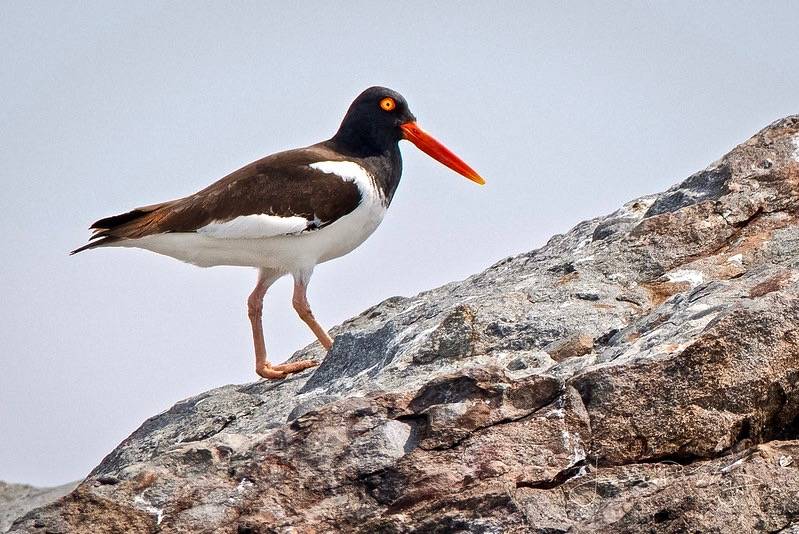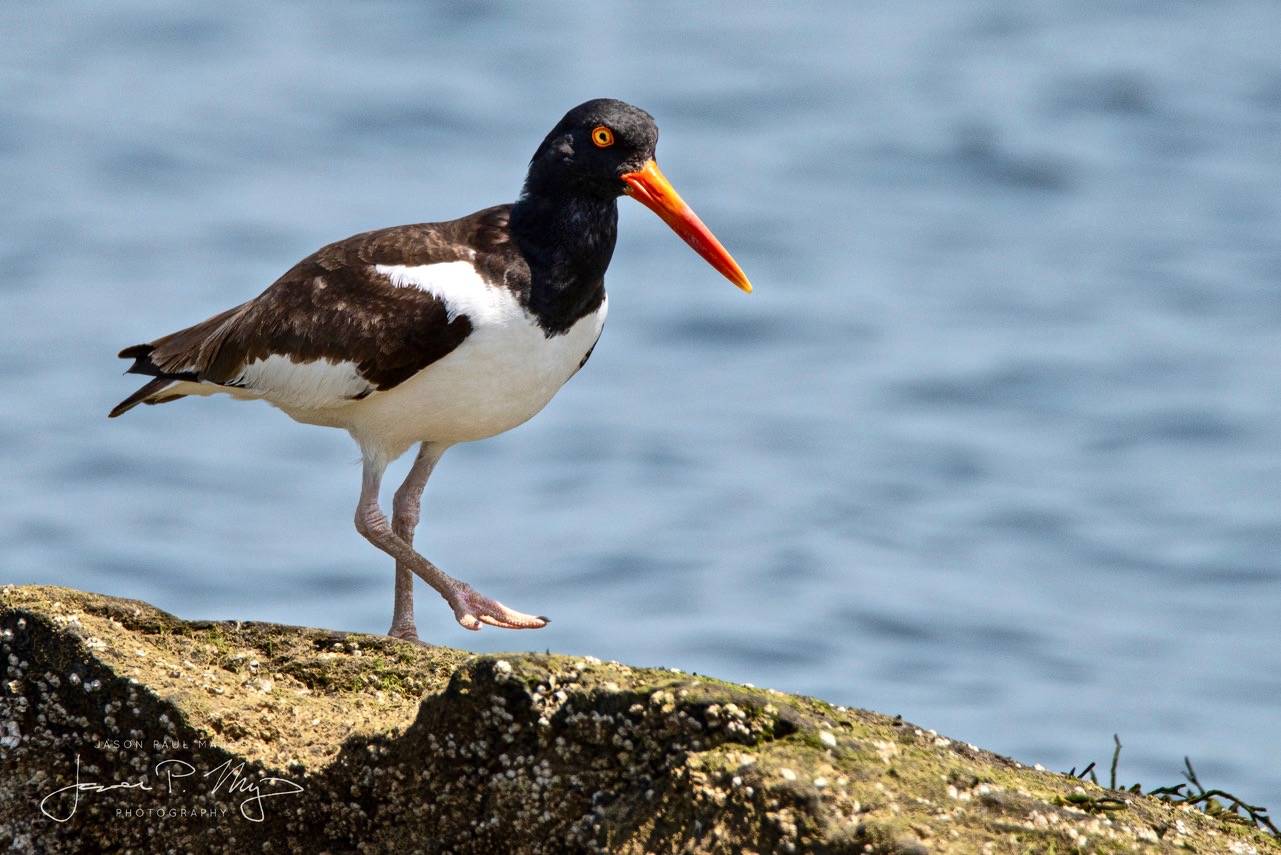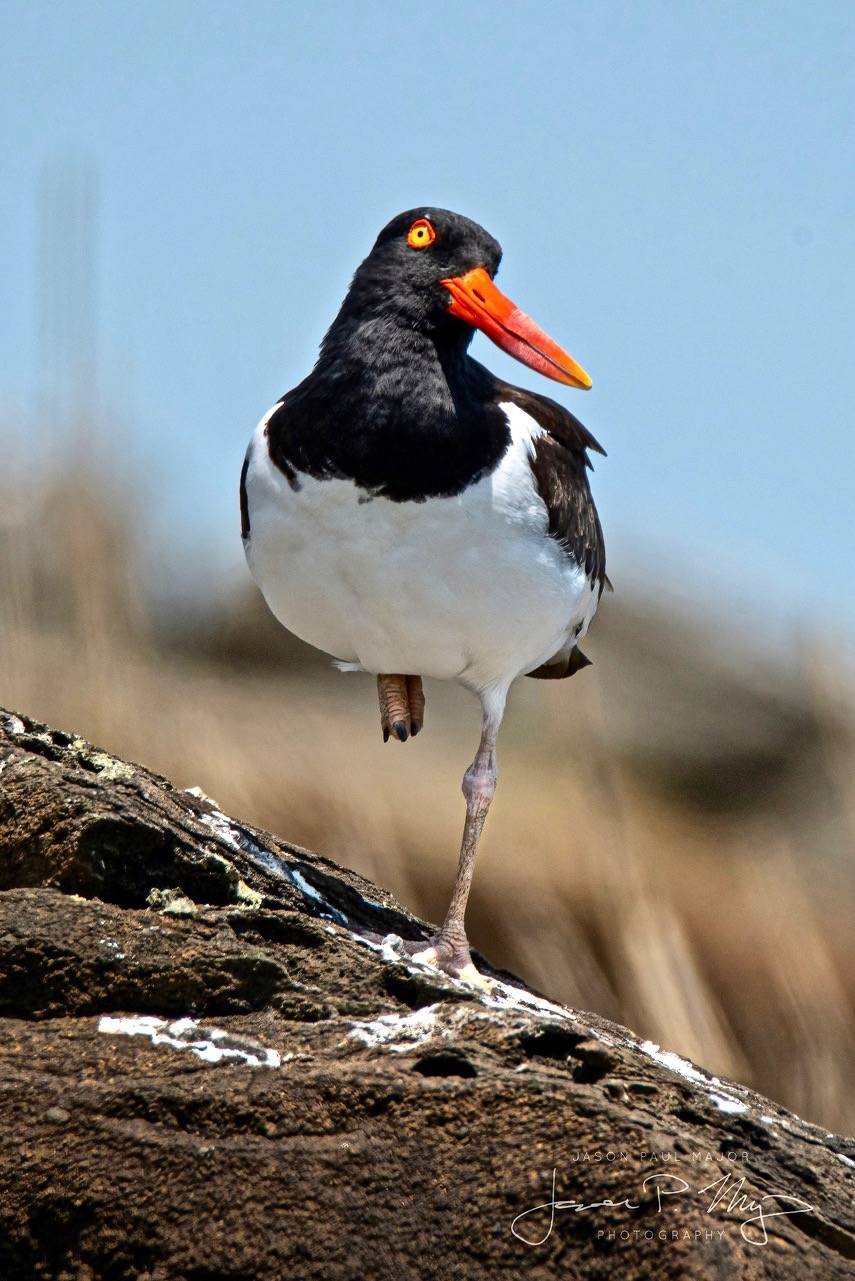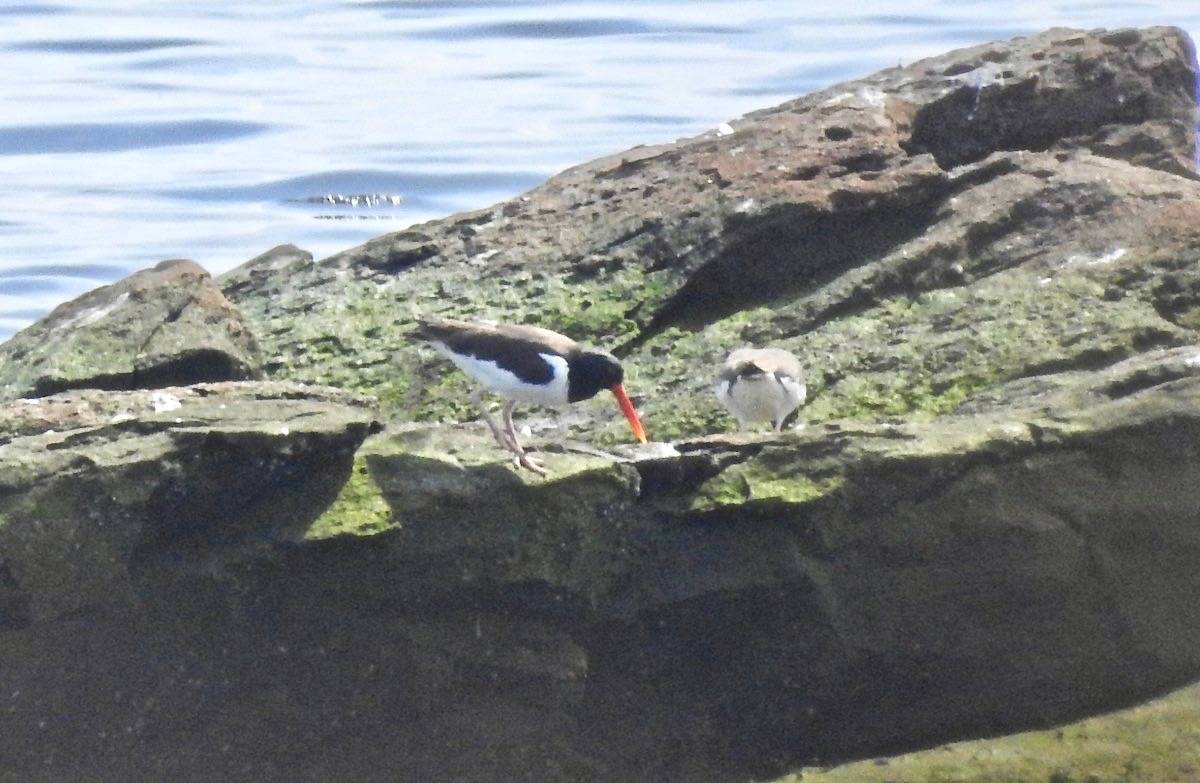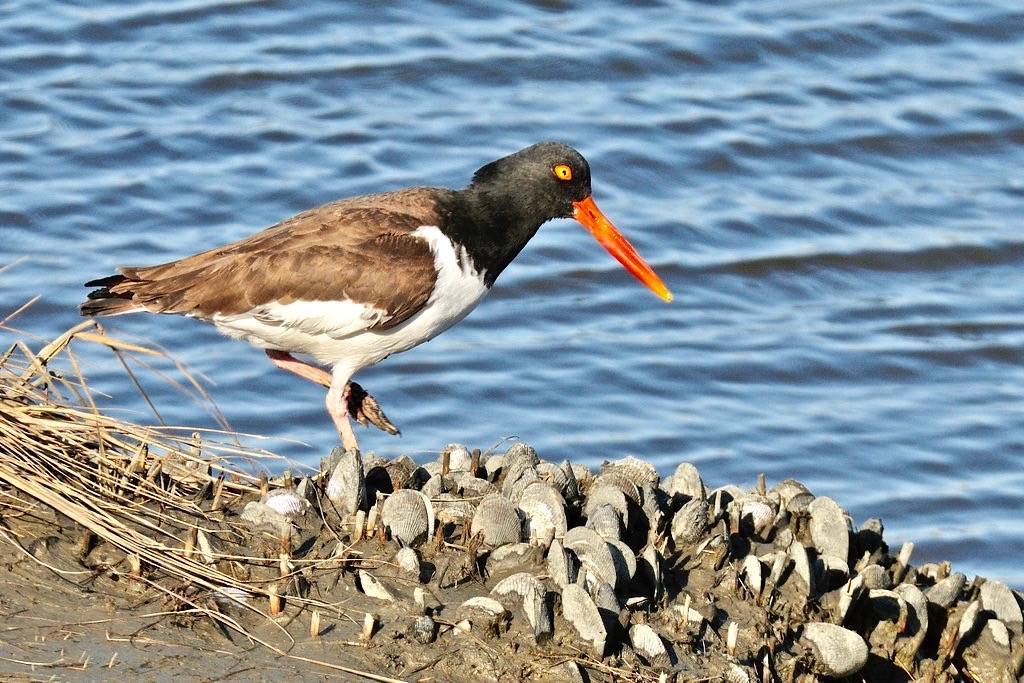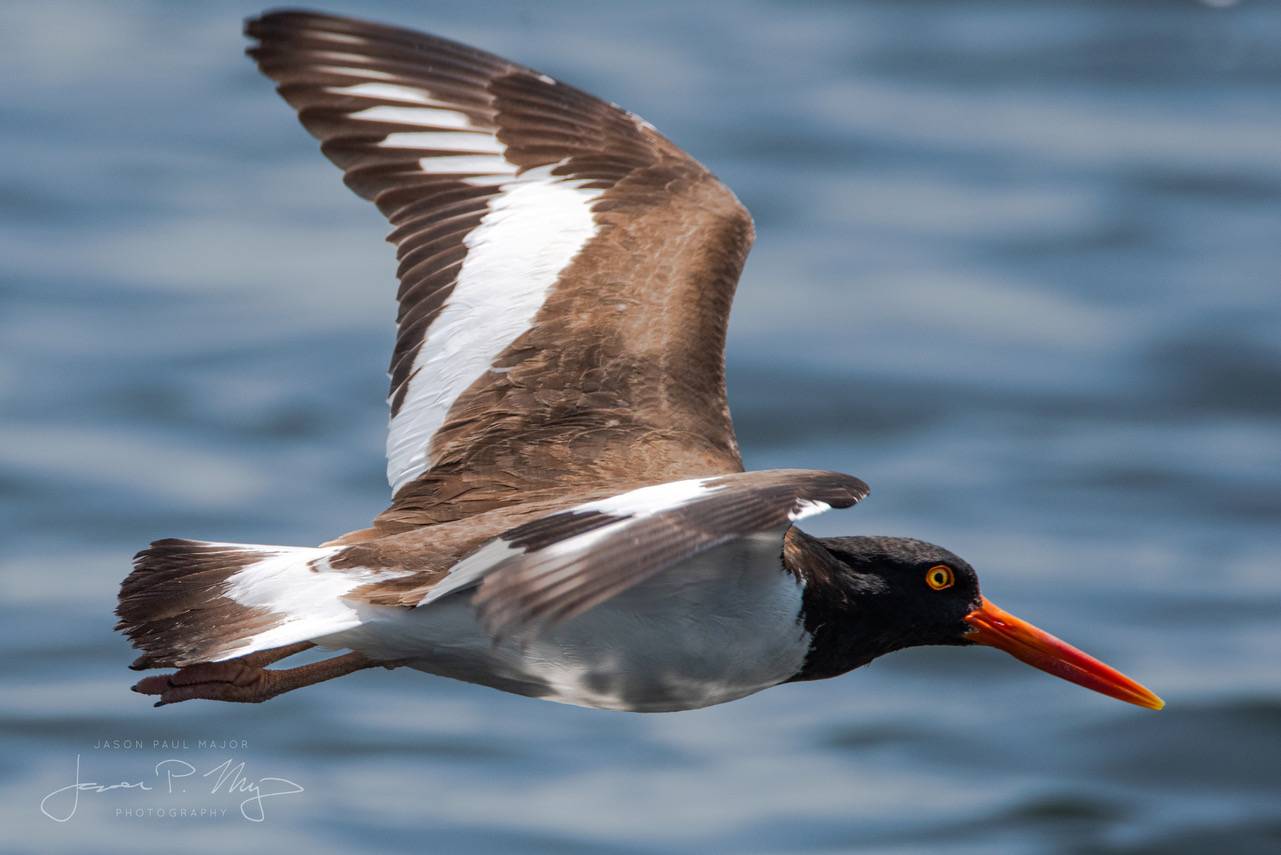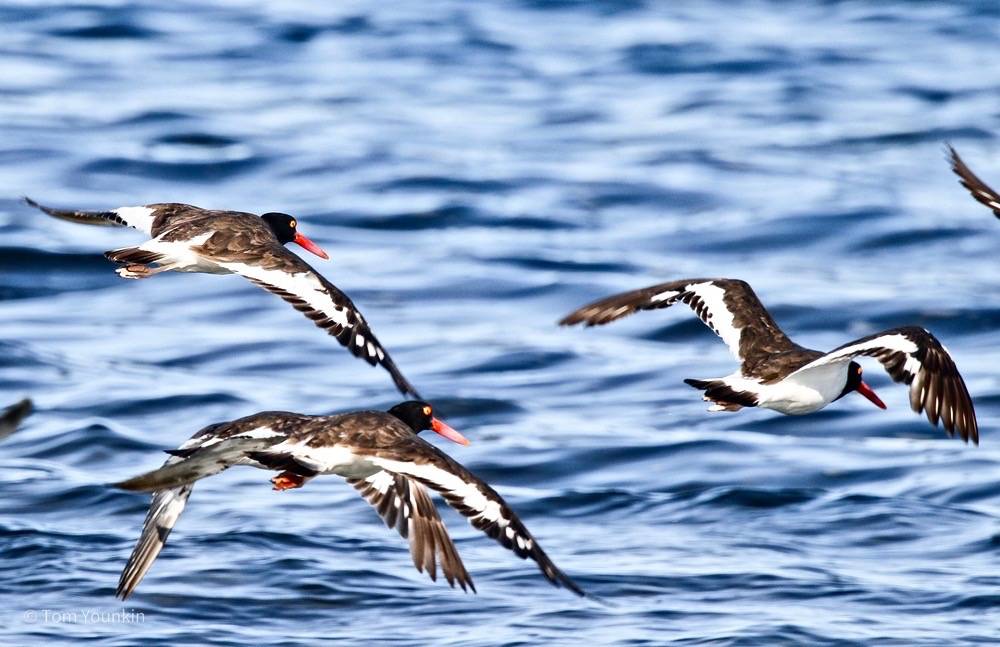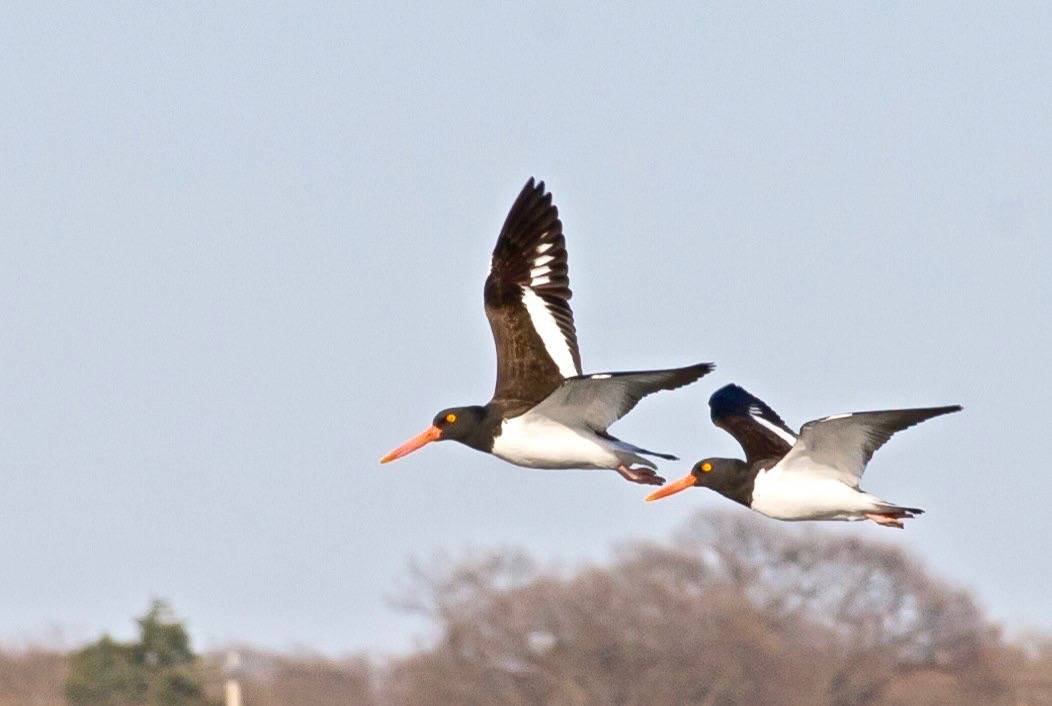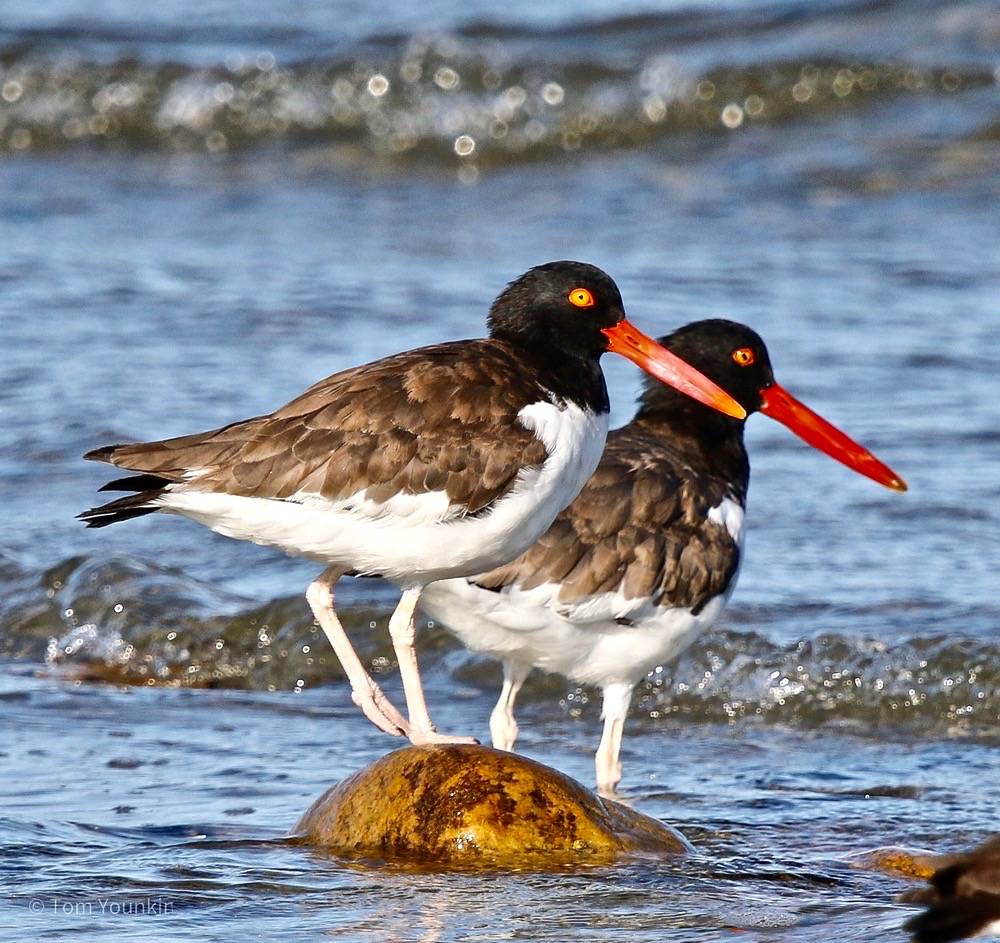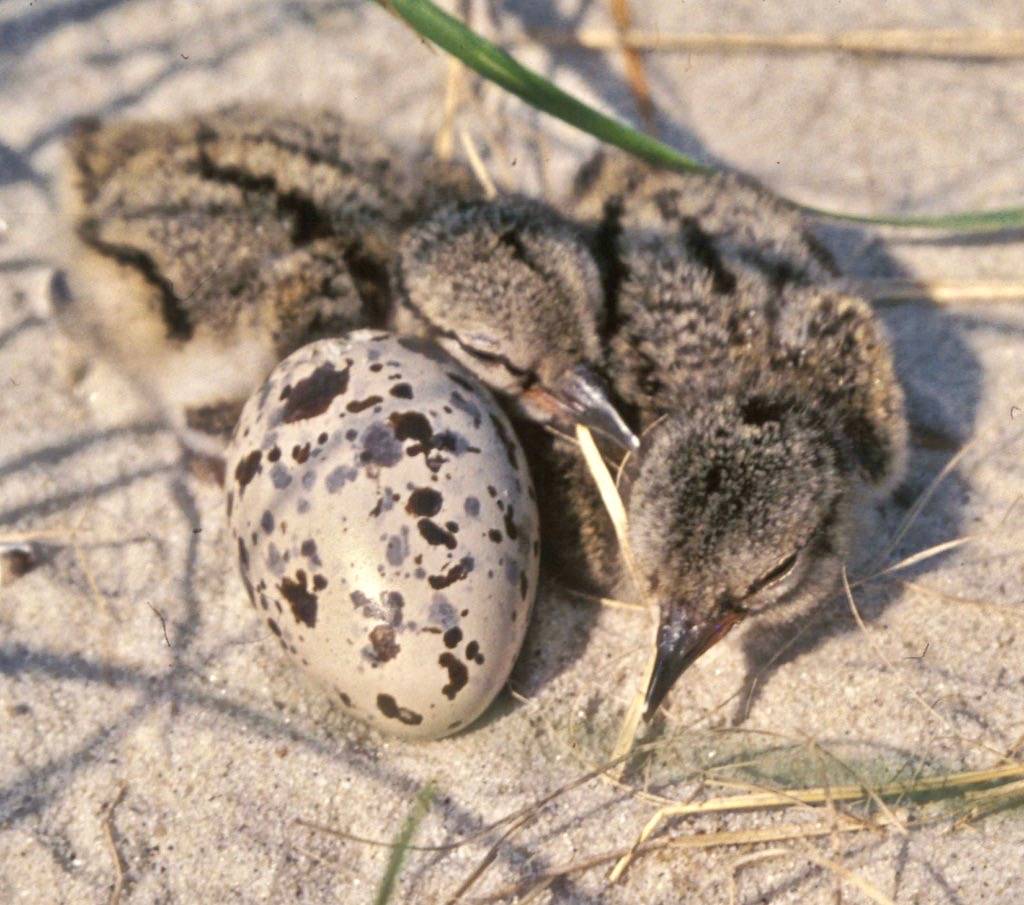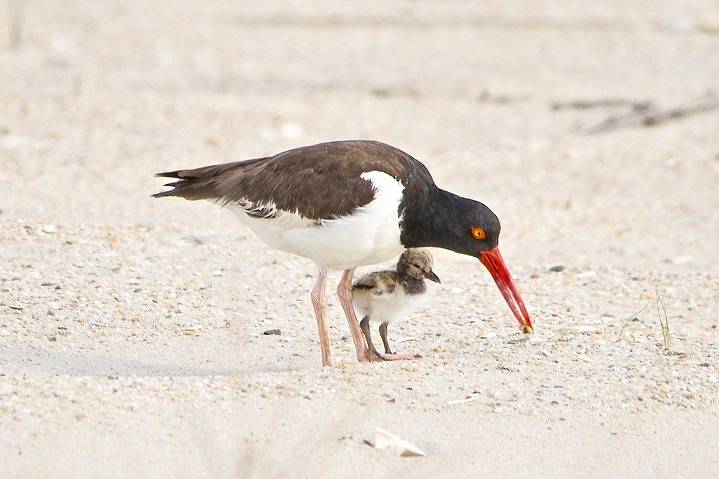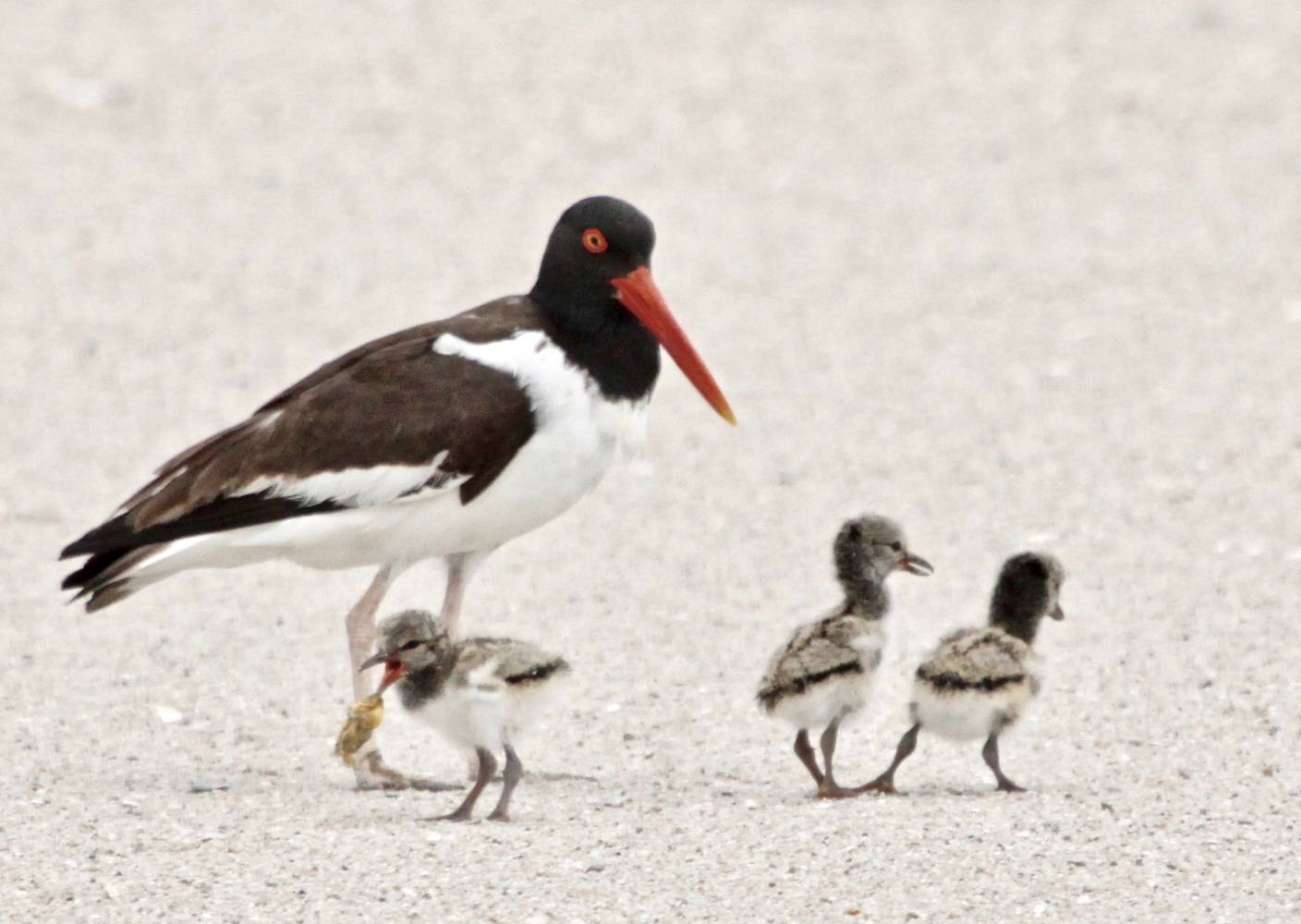American Oystercatcher
The American Oystercatcher is a large coastal shorebird the size of a crow. It was first recorded at Salter Grove in May of 2011 and has been seen every year since. Two to three adults congregate on the same rocky islet south of Rock Island and are readily visible from the southern portion of the Marsh Trail. Their piercing calls can be heard even from the upland woods of the park.
It is surprising that the oystercatchers keep returning to Salter Grove every year since birds normally do not return to failed nest sites. Shortly after the appearance of three oystercatcher chicks in 2019, over 30 Common Terns arrived and noisily displaced the oystercatcher family. The juvenile oystercatchers were not seen agin although the two adult oystercatchers continue to forage in the area until their departure in August.
In subsequent years, fewer terns arrived but only adult oystercatchers were ever observed. So, the terns cannot be blamed for the lack of reproductive success of the oystercatchers. A more likely predator is the American Mink which has been on the rise at Salter Grove and can easily swim out to the nesting rock to prey on the eggs or hatchlings.
The American Oystercatcher was extinct in northeastern United States in the 1800's because of hunting and egg collecting. However, due to protection from the Migratory Bird Treaty Act of 1918, oystercatcher populations have rebounded. At present, it breeds along the Atlantic coast of the Americas from New England down to Brazil, Uruguay and Argentina, and on the Pacific coast from California through Mexico, Central America, Peru and Chile.
Oystercatchers may use one of two techniques to feed on bivalves like the ribbed mussel found at Salter Grove. Either the stout bill is jabbed into a partly opened shell to pull out the soft contents, or it is used to hammer the shell until it breaks. They also feed on other intertidal invertebrates such as jellyfish, sand crabs, and marine worms. The abundant food supply at Salter Grove must be what brings them back year after year.
For more information:
https://www.allaboutbirds.org/guide/American_Oystercatcher
https://www.audubon.org/field-guide/bird/american-oystercatcher
https://en.wikipedia.org/wiki/American_oystercatcher
http://www.biokids.umich.edu/critters/Haematopus_palliatus/
https://www.fws.gov/law/migratory-bird-treaty-act-1918

